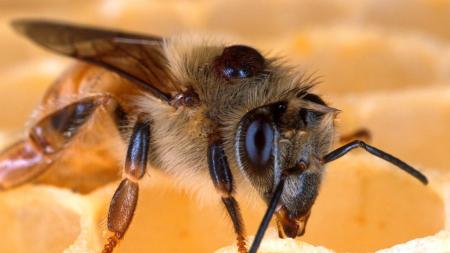Varroa mite Varroa destructor attacks European honeybees (Apis mellifera). It’s considered one of the greatest threats to Australia’s honey and honey bee pollination plant industries.
Detection in Australia
In June 2022, varroa mite was detected in sentinel hives at the Port of Newcastle, NSW. Following a 14-month emergency response, it was determined in September 2023 that eradication of varroa mite in Australia was no longer achievable.
Varroa mite has since been detected in other jurisdictions.
Response program
In September 2023, the National Management Group (NMG) – the peak decision-making body for the national varroa mite emergency response – decided that eradication of varroa mite was no longer achievable and to shift the focus of the response from eradication to transitioning to management activities.
In February 2024, the NMG endorsed a transition to management with a scope to:
- ensure an orderly stand-down of emergency response operational activities in NSW and Victoria
- slow the spread of Varroa destructor
- build industry resilience to the pest
- provide management options including Integrated Pest Management (IPM) recommendations and chemical control options, and
- support pollination security.
The transition to management program operates until February 2026 and is to increase resilience and capacity to manage varroa mite within the Australian honey bee industry and minimise the ongoing impacts of varroa mite naturalisation on the honey bee industry and pollination reliant industries.
Varroa mite remains a key threat to Australia’s honey and honey bee pollination plant industries, and it is important that government and industry continue to work together to manage this pest.
See the Varroa Mite Management Program website for information and resources.
Your obligations
Bee keepers should still maintain good biosecurity practices and check their hives regularly for signs of pests and disease.
See the BeeAware website for information and resources.
Report sightings
If you suspect an exotic pest or disease outbreak, report it. Even if you’re not sure.
Call the Exotic Plant Pest Hotline on 1800 084 881. This will put you in touch with your state or territory’s biosecurity agency.
For signs of exotic bees and pests in imported goods, sea containers or parcels, call See. Secure. Report on 1800 798 636 or use our online form.
Follow the rules
Keep exotic dangerous pests and diseases out of Australia. Never ignore our strict biosecurity rules.
Import shipments may need to be treated and certified. Before you import, check our Biosecurity Import Conditions system (BICON).
Movement restrictions
Check state and territory restrictions on the entry of bees, beehives, bee keeping equipment and bee products:
- New South Wales
- Queensland
- Victoria
- Tasmania
- South Australia
- Australian Capital Territory
- Western Australia
About the pest

Varroa mite is an external parasitic mite that attacks European honey bees and the Asian honey bee (Apis cerana). Australian native bees are not affected by varroa mite.
It is a distinctive-looking small mite, around 1mm in diameter, reddish-brown in colour and can be seen with the naked eye.
The mite attaches itself to the bee and feeds on them. It weakens them and kills colonies. European honey bees infested with varroa are likely to die within 3 to 4 years if left untreated. The mite also transmits honey bee viruses.
Varroa mite is a Category 2 Emergency Plant Pest (EPP) under Schedule 13 of the Emergency Plant Pest Response Deed (EPPRD). Internal and external mites of bees are listed as number 9 in the Top 42 National Priority Plant Pests.
Resources
See more on the response program or varroa mite.
- Varroa mite emergency response (NSW DPI)
- Wild European Honey Bee Management Program (NSW DPI)
- Impact of outbreak of varroa mite in New Zealand (VIDEO, includes discussion on risk management)
- beeaware.org.au
- Biosecurity Manual for Beekeepers (Farm biosecurity)
- National Bee Pest Surveillance Program (Plant Health Australia)
- National Bee Biosecurity Program (Plant Health Australia)